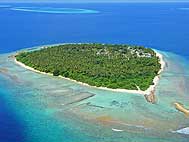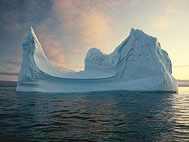| SEARCH |
-

Nov 17, 2015
Reflections on a three-decade legacy
The International Geosphere-Biosphere Programme (IGBP) will come to a close at t...
-
Nov 17, 2015
Use of and access to content on this website
Text and images produced by IGBP in house are free to use with appropriate credi...
-
Nov 12, 2015
Bella Gaia performance and panel discussion to mark IGBP's closure
A musical performance by Bella Gaia will celebrate the achievements and legacy o...
-

Towards Future Earth:
evolution or revolution?
During its three decades of existence, the International Geosphere-Biosphere Pro...
-
A personal note on IGBP and the social sciences
Humans are an integral component of the Earth system as conceptualised by IGBP. João Morais recalls key milestones in IGBP’s engagement with the social sciences and offers some words of advice for Future Earth.
-
IGBP and Earth observation:
a co-evolution
The iconic images of Earth beamed back by the earliest spacecraft helped to galvanise interest in our planet’s environment. The subsequent evolution and development of satellites for Earth observation has been intricately linked with that of IGBP and other global-change research programmes, write Jack Kaye and Cat Downy .
-
Deltas at risk
Around 500 million people worldwide live on deltas, but many of the world's deltas are sinking due ...
-
Climate change: the state of the science
A new data visualization released on the first day of the plenary negotiations at the UNFCCC’s clima...
-
Climate Change:
the State of the Science
Videos now online from the Stockholm public forum to mark the launch of the IPCC's climate report, 2...
Opinion
-
 March 23, 2011
March 23, 2011
Tracking China’s urban emissions
Opinion | China’s vast cities are hungry for energy. Shobhakar Dhakal discusses emissions with Owen Gaffney. -
 January 1, 2011
January 1, 2011
UNsustainable?
Opinion | The United Nations has struggled to deliver on many environmental and developmental challenges. Time for new thinking, then, which is why UN Secretary-General Ban Ki-moon has set up the Global Sustainability Panel. But how can science contribute? Owen Gaffney discusses the panel with Janos Pasztor . -
 October 31, 2010
October 31, 2010
Have we entered the "Anthropocene"?
Opinion | In 2000, Nobel Laureate Paul Crutzen, IGBP Vice-chair at the time, and Eugene F. Stoermer proposed in IGBP's Global Change newsletter 41 that humanity had driven the world into a new geological epoch, "the Anthropocene". In 2002, a related article was published in the journal Nature. The concept has gained much attention within the scientific community and now more widely. The article is reproduced below. -
 June 1, 2010
June 1, 2010
Reflections on Governance
Opinion | What is the best solution to tackling climate change? There is no panacea, and we have to experiment with multiple approaches, Elinor Ostrom tells Ninad Bondre.
IGBP closed at the end of 2015. This website is no longer updated.
-

Global Change Magazine No. 84
This final issue of the magazine takes stock of IGBP’s scientific and institutional accomplishments as well as its contributions to policy and capacity building. It features interviews of several past...
-

Global Change Magazine No. 83
This issue features a special section on carbon. You can read about peak greenhouse-gas emissions in China, the mitigation of black carbon emissions and the effect of the 2010-2011 La Niña event on gl...
RECOMMENDED
-
INTERGOVERNMENTAL PANEL ON CLIMATE CHANGE:
How green is my future?
UN panel foresees big growth in renewable energy, but policies will dictate just how big.
-
UK:
'The Anthropocene: a new epoch of geological time?'
Royal Society, Philosphical Transactions A


















